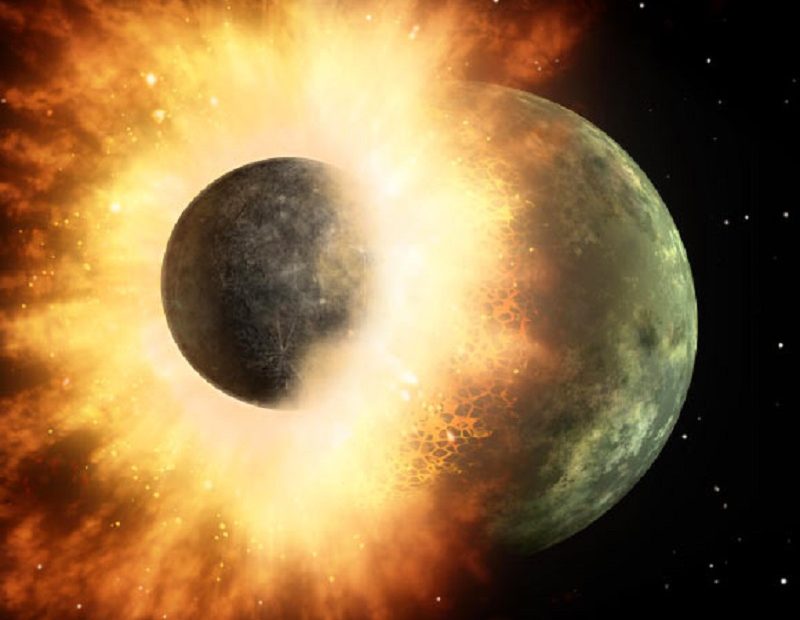Introduction
One of the most intriguing questions in astronomy is: How do planets form? For centuries, theories suggested that planets emerge from swirling disks of gas and dust surrounding young stars. Today, thanks to next-generation telescopes, astronomers can directly witness these processes in action. Recently, astronomers reported the observation of a growing protoplanet in a distant stellar system—a discovery that sheds light on the earliest stages of planet formation and brings us closer to understanding how systems like our own solar system came into being.
What Is a Protoplanet?
A protoplanet is a planetary embryo that forms within a disk of gas and dust around a young star, known as a protoplanetary disk. In these disks:
- Tiny grains of dust stick together through electrostatic forces.
- These clumps grow into kilometer-sized planetesimals.
- Through repeated collisions and accretion, some planetesimals gather enough mass to pull in more material via gravity, forming protoplanets.
- Eventually, with enough time and material, a full-fledged planet may emerge.
Spotting a protoplanet is particularly challenging because:
- They are faint compared to the bright glow of their parent star.
- They are often hidden within dense, dusty disks.
- Their growth timescales span millions of years, meaning catching them in the act is rare.
The Breakthrough Observation
Using advanced instruments capable of extremely high contrast imaging—such as infrared cameras on large observatories—astronomers detected a glowing clump embedded within a protoplanetary disk. Unlike background stars or dust filaments, this object displayed properties consistent with a young planet still accreting material.
Key evidence included:
- Thermal Emission: The clump emitted heat, suggesting ongoing accretion of gas and dust.
- Localized Disk Disturbance: The surrounding disk displayed spiral patterns and gaps—classic signs of a growing planetary body interacting with its environment.
- Spectral Signatures: Spectroscopy revealed gas inflows consistent with matter falling onto the object.
These combined observations strongly point to a protoplanet in the process of formation rather than a simple dust concentration.
How Do Astronomers Spot Such Worlds?
Detecting forming planets requires cutting-edge techniques:
- Direct Imaging: Specialized instruments block out the parent star’s light, making it possible to see faint companions nearby.
- Infrared Observations: Since protoplanets are warm from accretion, they shine brightly in infrared wavelengths.
- Spectroscopy: By studying the light’s spectrum, scientists can identify the chemical composition and temperature of the material being accreted.
- Disk Morphology Analysis: Spiral arms, shadows, and gaps in disks are fingerprints of embedded protoplanets exerting gravitational influence.
Why This Discovery Matters
- Testing Planet Formation Theories
Until now, most models of planet formation were theoretical. Direct evidence of a protoplanet confirms that planets do grow in the manner long hypothesized, validating decades of research. - Understanding Timescales
By estimating the protoplanet’s mass and growth rate, astronomers can determine how quickly planets form and at what stage in a star’s life cycle they appear. - Clues to Our Solar System’s Origins
Observing other systems in formation provides a mirror into our own solar system’s ancient past, roughly 4.5 billion years ago, when Earth, Jupiter, and the other planets were still accreting. - Implications for Exoplanet Diversity
Protoplanets observed in distant systems explain why exoplanets come in such a wide variety of sizes, masses, and orbital arrangements.
What’s Next in the Hunt
The discovery of a growing protoplanet is just the beginning. Future research will focus on:
- Tracking Orbital Motion: Confirming the object’s orbit around its star to rule out other possibilities.
- Measuring Mass Accretion Rates: Determining how fast material is falling in and how large the protoplanet might become.
- Comparative Studies: Observing multiple young systems to see whether planet formation follows similar paths or varies significantly.
- Next-Generation Telescopes: Instruments like the James Webb Space Telescope and upcoming Extremely Large Telescopes (ELTs) will provide sharper images and more detailed spectra.
Conclusion
Spotting a growing protoplanet in a distant stellar system marks a profound milestone in astronomy. For the first time, humanity can witness the very processes that shaped Earth, Jupiter, and the countless worlds orbiting stars across the galaxy. Every new observation of a forming planet brings us closer to answering the timeless question: How do planets—and perhaps life itself—emerge from the cosmic dust?
